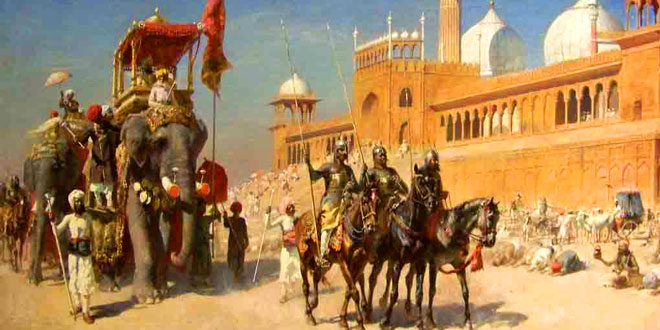Question: Why did the Nawab of Awadh and Bengal try to do away with the jagirdari system?
Answer: The Nawabs of Awadh and Bengal tried to do away with the jagirdari system in order to reduce the influence of the Mughals in their states.
Question: How were the Sikhs organised in the eighteenth century?
Answer: During the 17th century the Sikhs got organised into a political community. This led to the regional state-building in Punjab. Guru Gobind Singh fought many battles against the Rajputs as well as Mughal rulers, both before and after the institution of the Khalsa in 1699. After the death of Guru Gobind Singh in 1708, the Khalsa revolted against the Mughal authority under the leadership of Banda Bahadur and declared their sovereign rule. Banda Bahadur was captured in 1715 and executed in 1716. In the 18th century, the Sikhs organised themselves into a number of bands called jathas. Their well-knit organisation enabled them to put up successful resistance to the Mughal governors first and then to Ahamd Shah Abdali. Who had seized the rich province of the Punjab and the Sarkar of Sirhind from the Mughals.
Question: Why did the Marathas want to expand beyond the Deccan?
Answer: The Marathas wanted to expand beyond the Deccan in order to decrease the Mughal influence. By the 1720s, they seized Malwa and Gujarat from the Mughals and by the 1730s, the Maratha king was recognised as the overlord of the entire Deccan peninsula.
Question: What were the policies adopted by Asaf Jah to Strengthen his position?
Answer: After being the actual ruler of the Deccan, Asaf Jah began to adopt some policies in order to strengthen his position :
- He brought skilled soldiers and administrators from northern India who welcomed the new opportunities in the south.
- He appointed mansabdars and granted jagirs.
- He ruled independently without Mughal interference. The Mughal emperor merely confirmed the decisions already taken by Asaf Jah.
Question: How did the later Mughal emperors lose their control over their nobles?
Answer: The efficiency of the imperial administration broke down under the later Mughal emperors. It became increasingly difficult for them to keep a check on their powerful Nobles appointed as governors often controlled the offices of revenue and military administration as well. This gave them extraordinary political, economic and military powers over vast regions of the Mughal empire. As the governors consolidated their control over the provinces, the periodic remission of revenue to the capital declined.
Question: Divide the states of the eighteenth century into three overlapping groups.
Answer: The states of eighteenth century:
- States that were old Mughal provinces like Awadh, Bengal and Hyderabad.
- States that had enjoyed considerable independence under the Mughals as watan jagirs. These included several Rajput principalities.
- The group included states under the control of Marathas, Sikhs and others like the Jats.
 Class Notes NCERT Solutions for CBSE Students
Class Notes NCERT Solutions for CBSE Students


